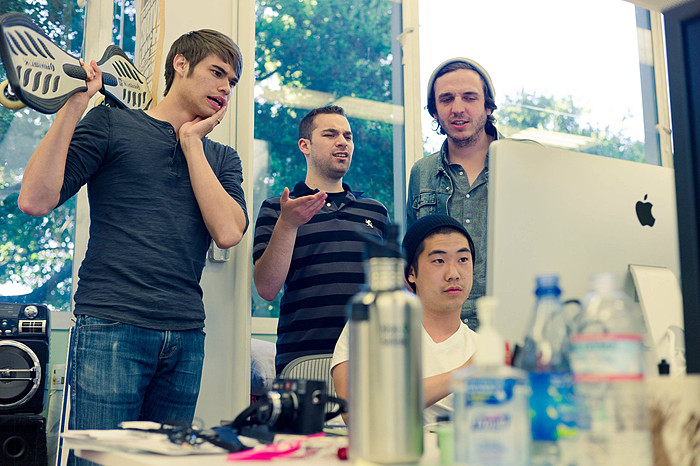How to work with designers
- Transfer

This is a translation of an interesting article about designers and how they work How to Work with Designers .
For designers to understand you, speak not about indicators, but about users
Most often, the meaning does not change much. For example, you are talking about an increase in the conversion rate for registration of site visitors by X%. In other words, you want to simplify the registration process for users. It seems to be about the same thing, but said in different words. Designers will take the second option better because they are usually closer to users.
Other examples of such "translations":
- Can we increase the clickability of this button? → How do we make sure the user is aware of a new feature that is easy to use?
- It is necessary that these changes do not worsen performance → It is necessary to make sure that these changes do not cause inconvenience to users.
- Let's increase the virus rate → Let's encourage users who share this content with their friends.
Designers are different
Yes, designers differ from colleagues of programmers, managers, engineers, because design covers a lot of things at once, including:
- Visual design: typography, color scheme, structure and everything else that is responsible for the visual design.
- Interaction: convenient navigation, the availability of site features for users, the impact of visual effects on the behavior of visitors, etc.
- Product goals: Does design cope with its task? Do users have a clear idea of the product?
Each part covers a very large area, so some designers are good at visual design, but have a poor understanding of how it should interact with the user. Therefore, a good designer should understand and navigate in all three components. In addition, the designer is different for the designer - if you replace one good with another of the same level, the result of the work will most likely be different, because design is a subjective thing.
A more experienced designer is able to cope with more abstract tasks.
Here are examples of designers thinking at different levels:
- Lvl 1 Designer: Design a form that allows users to edit their profile.
- Lvl 2 Designer: Design the best user interface for editing your profile.
- Designer Lvl 3 (wide vision): to develop a system for editing everything - profiles, posts, settings, etc.
- Designer Lvl 3 (deep vision): make users want to update their profiles.
- Designer Lvl 4: to develop solutions to increase the credibility of profiles on the site.
- Lvl 5 Designer: identify the main tasks and problems of the product and create ways to solve them.
An experienced designer will be able to generate better ideas if he understands the product and recognizes its development strategy, as well as if it performs more complex tasks. Conversely, if it solves minor problems and cannot affect the course of development of the product as a whole, then the designer will not be able to fully reveal.
The more time a designer spends with other designers, the better
One of the best ways to improve the work and skills of a designer is to get feedback from other designers. Constructive criticism is always useful, you can look at the result with a straightforward look and try to improve the product. Therefore, the designer should participate in the discussion at the initial stages of the project, preferably together with other designers. Also, the designer needs to delve into the essence of the development process in order to better understand the mechanisms and principles of the project.
What designers value and strive for is hard to measure
You can give a simple example: we all understand that mess, wherever, is bad. But how to determine when there is too much mess? This is not possible, because each person may have their own definition of disorder. So in the work of the designer. In addition, it consists of many small, seemingly invisible pieces. However, if you treat each small part of the work without due attention, all these pieces will add up to a not very high-quality result.
Designers often overestimate the experience of one person and at the same time underestimate the experience of many people. Moreover, they are sometimes based on their preferences, and not on the interests of the target audience. Of course, not every designer can talk like that.
The path to the designer’s heart lies through attention to detail.
The easiest way to please a designer is to respect the fine details of his work. For example, layout pixel by pixel layout. The designer will be just happy. Any designer likes to work with programmers, layout designers and managers who not only appreciate his work, but also have a taste and general ideas about design. And of course, it’s easy to find a common language with the designer if your ideas about the project and understanding of the development strategy are similar.
